
A beachhead, is a temporary line created when a military unit reaches a landing beach by sea and begins to defend the area while other reinforcements help out until a unit large enough to begin advancing has arrived. The term is sometimes used interchangeably with bridgehead and lodgement. Beachheads were very important in operations such as Operation Neptune during World War II, the Korean War, and the Vietnam War, among many other examples.
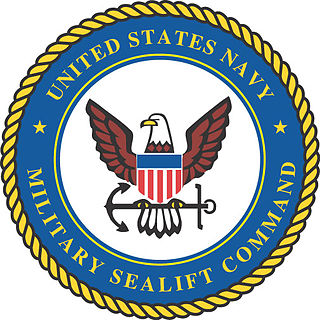
The United States Navy's Military Sealift Command (MSC) is an organization that controls the replenishment and military transport ships of the Navy. Military Sealift Command has the responsibility for providing sealift and ocean transportation for all US military services as well as for other government agencies. It first came into existence on 9 July 1949 when the Military Sea Transportation Service (MSTS) became solely responsible for the Department of Defense's ocean transport needs. The MSTS was renamed the Military Sealift Command in 1970.
A military operation is the coordinated military actions of a state, or a non-state actor, in response to a developing situation. These actions are designed as a military plan to resolve the situation in the state or actor's favor. Operations may be of a combat or non-combat nature and may be referred to by a code name for the purpose of national security. Military operations are often known for their more generally accepted common usage names than their actual operational objectives.

Carrier onboard delivery (COD) is the use of aircraft to ferry personnel, mail, supplies, and high-priority cargo, such as replacement parts, from shore bases to an aircraft carrier at sea. Several types of aircraft, including helicopters, have been used by navies in the COD role. The Grumman C-2 Greyhound has been the United States Navy's primary COD aircraft since the mid-1960s.

Power projection is a term used in military and political science to refer to the capacity of a state "to apply all or some of its elements of national power — political, economic, informational, or military — to rapidly and effectively deploy and sustain forces in and from multiple dispersed locations to respond to crises, to contribute to deterrence, and to enhance regional stability."

In warfare, a theater or theatre is an area in which important military events occur or are progressing. A theater can include the entirety of the airspace, land and sea area that is or that may potentially become involved in war operations.
The term military campaign applies to large scale, long duration, significant military strategy plans incorporating a series of inter-related military operations or battles forming a distinct part of a larger conflict often called a war. The term derives from the plain of Campania, a place of annual wartime operations by the armies of the Roman Republic.
Hot racking is the sanctioned practice within military organizations of assigning more than one crew member to a bed or "rack" to reduce berthing (sleeping) space. The practice dates back at least to the sixteenth century, and today is particularly applied aboard submarines, where maximization of space is especially important. Generally, the lowest ranking members of the crew are required to hot rack. Hot racking is sometimes utilized in jails and prisons to deal with overcrowding.

Sealift is a term used predominantly in military logistics and refers to the use of cargo ships for the deployment of military assets, such as weaponry, vehicles, military personnel, and supplies. It complements other means of transport, such as strategic airlifters, in order to enhance a state's ability to project power.
Expeditionary warfare is the deployment of a state's military to fight abroad, especially away from established bases. Expeditionary forces were in part the antecedent of the modern concept of rapid deployment forces. Traditionally, expeditionary forces were essentially self-sustaining with an organic logistics capability and with a full array of supporting arms.
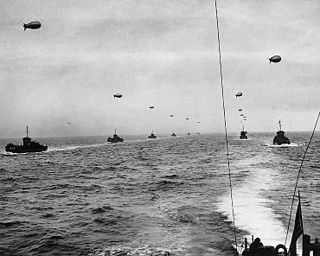
A line of communication is the route that connects an operating military unit with its supply base. Supplies and reinforcements are transported along the line of communication. Therefore, a secure and open line of communication is vital for any military force to continue to operate effectively. Prior to the advent of the use of telegraph and radio in warfare, lines of communication were also the routes used by despatch riders on horseback and runners to convey and deliver orders and battle updates to and from unit commanders and headquarters. Thus, a unit whose lines of communication were compromised was vulnerable to becoming isolated and defeated, as the means for requesting reinforcements and resupply is lost. The standard military abbreviation is LOC, or SLOC for Sea line of communication or ALOC for air line of communication.
An offensive is a military operation that seeks through aggressive projection of armed force to occupy territory, gain an objective or achieve some larger strategic, operational, or tactical goal. Another term for an offensive often used by the media is 'invasion', or the more general 'attack'.
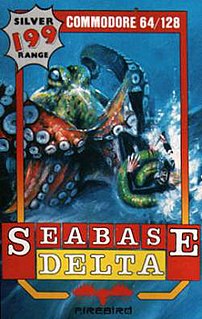
Seabase Delta is a text adventure game by Firebird released in 1986 for the Amstrad CPC, Commodore 64 and ZX Spectrum home computers. It is the sequel to Subsunk.
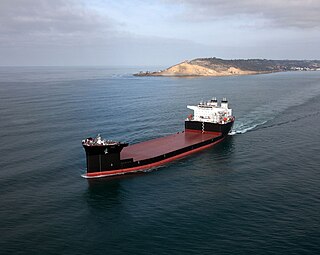
An Expeditionary Transfer Dock (ESD), formerly the Mobile Landing Platform (MLP), was designed to be a semi-submersible, flexible, modular platform providing the US Navy with the capability to perform large-scale logistics movements such as the transfer of vehicles and equipment from sea to shore. These ships significantly reduce the dependency on foreign ports and provide support in the absence of port availability.

USNS Montford Point (T-ESD-1),, the lead ship of her class of Expeditionary Transfer Docks (ESD), is a ship named in honor of African American Marine Corps recruits who trained at Montford Point Camp, North Carolina, from 1942 to 1949. After $115 million was allocated for long-lead time material and advanced design efforts, in late 2010 General Dynamics's National Steel and Shipbuilding Company was awarded the contract, worth approximately $500 million, to build the first of three planned vessels.
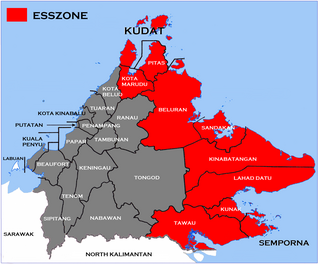
The Eastern Sabah Security Zone (ESSZONE) is a security zone in the Malaysian state of Sabah that was launched by the Malaysian Prime Minister, Najib Razak on 25 March 2013 following the persistent attacks by pirates and militants from the southern Philippines that occurred in the eastern part of Sabah especially after the 2013 Lahad Datu standoff. It includes the districts of Kudat, Kota Marudu, Pitas, Beluran, Sandakan, Kinabatangan, Lahad Datu, Kunak, Semporna and Tawau. The Eastern Sabah Security Command (ESSCOM) is the main enforcement authority for ESSZONE, chaired by Datuk Seri Musa Aman.
The Malaysian Government has embarked on a programme to significantly upgrade the land, sea and air defence capabilities of the Malaysian Armed Forces in ESSZONE.
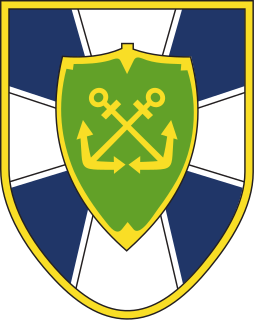
The Naval Force Protection Battalion is a land formation of the German Navy. It was formed in Eckernförde on 1 April 2014, succeeding the Naval Protection Force, against a background of rapidly escalating tensions in Eastern Europe centering around Ukraine.














